




Flaunt your true colors while taking in a vibrant fall in St. Pete-Clearwater, home to America’s Best Beaches, thriving gayborhoods and Florida’s largest Pride festival. Soak up the sun on sugar-white sand, wade in emerald-green Gulf waters and wind down with fiery red sunsets, night after night. Let’s shine.












Volume 30, Issue 764 • September 5-18, 2024
Managing Editor Noah Mitchell 612-461-8723
Editorial Assistant Linda Raines 612-436-4660
Editor Emeritus Ethan Boatner
Contributors Lakey Bridge, E.B. Boatner, Buer Carlie, Natasha DeLion, Alyssa Homeier, Terrance Griep, Elise Maren, Jen Peebles-Hampton, Linda Raines, Alexander Reed, Madison Roth, Gregg Shapiro, Randy Stern, Susan Swavely, Carla Waldemar, Todd P. Walker, Emma Walytka, Spencer White
Vice President of Sales & Advertising
Barry Leavitt 612-436-4690
Account Executives
Nathan Johnson 612-436-4695
Richard Kranz 612-436-4675
Sales & Event Administration
Linda Raines 612-436-4660
National Sales Representatives Rivendell Media 212-242-6863
Creative/Digital Director Mike Hnida 612-436-4679
Photographer Sophia Hantzes
Publisher Lavender Media, Inc.
President & CEO Stephen Rocheford 612-436-4665
Chief Financial Officer Doug Starkebaum 612-436-4664
Administrative Assistant Michael Winikoff 612-436-4660
Distribution Metro Periodical Partners 612-281-3249
Founders George Holdgrafer, Stephen Rocheford
Inspiration Steven W. Anderson (1954-1994), Timothy J. Lee (1968-2002), Russell Berg (1957-2005), Kathryn Rocheford (1914-2006), Jonathan Halverson (1974-2010), Adam Houghtaling (1984-2012), Walker Pearce (1946-2013), Tim Campbell (1939-2015), John Townsend (1959-2019), George Holdgrafer (1951-2024)
and
Lavender
Submit
Lavender Magazine, Letters
the Editor, 5100 Eden Ave, Suite 107, Edina, MN 55436 or e-mail editor@lavendermagazine.com.
For our Privacy Policy, go to LavenderMagazine.com/resources/ privacy-policy
LAVENDER MEDIA, INC.
5100 Eden Ave, Suite 107, Edina, MN 55436
612-436-4660 Office
612-436-4660 Subscriptions/Distribution
612-436-4660 Lavender Advertising






BY NOAH MITCHELL
Growing up, winter was always my favorite season. It had everything I could ask for: Christmas, New Year’s, my birthday (February 28 for those curious), and plenty of snow to play in.
Then, I stopped sledding and started driving. Much of winter’s charm faded into a slurry of slick roads and seasonal depression. I still love the holidays and the two days each year with a perfect mix of light snow, no wind and high-20s temps, but if spring sprang immediately after the conclusion of the 12th day of Christmas, you wouldn’t hear any complaints from me.

As an oldest sibling and a former high school debate captain, though, I needed to have a favorite season to champion and argue over. Spring is lovely, but it seems to last all of two weeks between the slush of late winter and the heat of summer. There’s nothing like a sunny summer day on the lake, but like perfect winter days, they seem to come twice a year at best. More often, my summers consist of missing the freedom of summer vacation from school and hoping I’ve managed to make it through

BY E.B. BOATNER
the day without a sweat mark on the seat of my pants.
That left me with fall. The weather is still warm enough that I’m rarely uncomfortable but cool enough to wear layers and cozy up with a blanket or three. The fall colors are, of course, drop-dead gorgeous. While September no longer means the start of a new school year, Labor Day is still a marker of the changing seasons and a chance to reset and refresh. I love seeing family every Thanksgiving, and my post-feast nap is probably the best sleep I get all year.
While fall may be the herald of wintry misery, it is not itself winter. Enjoy it, my favorite season — and therefore objectively the best season — while it lasts.
I’ve visited Vermeer’s Girl With a Pearl Earring in the Mauritshuis, his Milkmaid in the Rijksmuseum, and Rembrandt masterworks in the House of Six. Never, until the opening of the Paris Olympics, had I heard a whisper of Jan van Bijlert and his Feast of the Gods
Even so, one dekko at singer Philippe Katerine’s Blue Dionysus, backgrounded by drag queens while reclining before a prancing Satyr, should have sent one fact-checking before assuming the French had strategized a grotesque parody of Da Vinci’s The Last Supper to welcome their expected million-plus cashsquandering guests. After all, the Games were Greek, as were their lusty gods. A clue?
Consider the meticulous historical referencing embedded in many other Olympic elements. From an innovative Olympic torch to Phryge, the confusing Games gnome, to the very layout of the grueling Olympic Marathon; all steeped in history, not insult.
The torch mechanism–and that of the balloon cauldron–was the creation of Matthieu Lehanneur. The “flame,” which had not been fully tested until the moment it was set aloft, uses no fossil fuels but instead runs on light and water. “Light magical and unifying,” Lehanneur shared. “It will be a beacon in the night and a sun within reach during the day.” It spent each night tethered in the Jardin des Tuileries, balloon-friendly since December 1, 1783, when the Montgolfier brothers ascended to the shock and awe of a crowd of 400,000.
The initial torch was ignited April 16, by the sun’s first rays over Olympia, Greece. Its sleekness embodies Paris 2024’s three themes: Equality, Water, and Peacefulness.
Equality: For the first time ever, the same number of men and women athletes took part in competitions.
Water: Traveling aboard the Belem, the torch visited six overseas territories–Guadeloupe, French Guiana, Martinique, French Polynesia, New Caledonia and Réunion. On June 18, the torch returned to France. Alice Modolo, noted French freediver, received the lit torch 20m/66ft underwater in Villefranche-sur-Mer Harbor, global hub of freediving, sending it on to the Alpes-Maritimes.
Smiling, lumpy, little “Phryge,” the initially obscure mascot of the 2024 Games, was inspired by the Phrygian cap of liberty. It has been worn as far back as freed Roman slaves (then peleus), and others, including Phrygians in ancient Turkey, long before its ties to the French Revolution and freedom. Once alerted, tourists crowded to snatch hats, key rings–all things Paris Phryge–off boutique shelves, requiring daily restocking.
Even the grueling marathon had a tale to tell, retracing the route of October 5, 1789, when women of the Paris marketplaces marched together to bring complaints of ruinous bread prices to King Louis XVI’s doorstep.
Equality: this year, equal numbers of men and women entered competitions. For the first time, the
men’s marathon ran on Saturday while the women won the coveted final Sunday slot. ESPN broadcast that Ethiopian Tamirat Tola “delivered a gritty run to claim Gold in an Olympic record time in a difficult men’s marathon Saturday” (2:06:26).
Sunday, Ethiopian-born Sifan Hassan, for Nederlands, ran the same route, securing women’s Marathon Gold in 2:22:55. In recent history, women have been restricted to 800m distances or less, extended to 1,500m in 1972. (Arguments declared women would be unable to handle psychological stresses or that long runs would cause infertility.)
Hassan did allow that “To finish the marathon is a kind of hell. It’s not easy,” not mentioning that some 37 hours earlier she’d garnered a Bronze in the 10,000m and, four days earlier, a Bronze in the 5,000m, running a total of 62k or 38.5 miles that week.
Ninety minutes later, Bhutan’s Kinzang Lhamo, 26, her country’s flag bearer and sole participating athlete, finished 79th—last; others had dropped out. Flanked by cheering onlookers, walking occasionally, Lhamo ran across the finish line at 3:52:59. In her native Dzongkha, she later remarked “My country did not send me 5,000 miles to start the race; they sent me 5,000 miles to finish it.”
[Next: For Every Dream There is a Troll]









There is an epidemic of mpox, also known as monkeypox, in central Africa. So far, there have been 15,000 reported cases with a 3% death rate. That rate is far higher than the death rate of the initial COVID-19 pandemic in 2020, which was between 1% and 2%.
The initial mpox epidemic in 2022 was a very mild form of the disease. This variant is a much more aggressive and deadly form of the disease with recuperation taking two to three weeks. This disease is primarily spread by skin-to-skin contact.
In this country, we are blessed to have had an initial public warning and vaccination program in 2022. There still is a vaccine available that appears to be effective against this new variation.
This disease has already spread to Europe and will likely spread to North America.

For all readers of this article, we are in a high-risk category because of our sexual orientation. That risk increases further if you are a senior citizen.
While the vaccine is still available, please contact your health care provider ASAP to arrange to receive the two-dose vaccination series. The first vaccination is followed by a second vaccination at least one month later.



For anyone who, like myself, has grown up in a small town without much visible LGBTQ+ acceptance, representations of the community can have a profound impact. When people are born, they don’t inherently understand politics or bigotry. As we engage with the culture around us, we’re informed about how people perceive social groups, including LGBTQ+ people. For me, this was a confusing and painful process. I grew up in a household that told me that being gay wasn’t a part of “God’s plan,” and that it ought to be avoided at all costs. For me, this upbringing led to a severe lack of awareness, where I wasn’t able to recognize the fondness I felt towards men as being a joyous reflection of love. For years, I tried to convince myself that I was absolutely straight, a futile mental battle that only succeeded in causing me pain. Fortunately, while I grew up in a community that wasn’t supportive of my identity, I was eventually able to find peace and joy in my LGBTQ+ identity from the media that I encountered. Obviously, LGBTQ+ people have been depicted in stories in a wide assortment of media for hundreds of years, but my personal catharsis would come from the games I played as a teenager.
When I first booted up “Undertale,” I wasn’t expecting it to get me thinking more deeply about LGBTQ+ identities. I’d heard that the game was a clever and humorous deconstruction of violence in RPGs, which is what initially drew me to the game. It certainly delivered on that front, with a battle system that allowed players to beat the entire game without killing a single enemy while also delivering a charming cast of characters. Two of these characters, Undyne, the headstrong warrior, and Alphys, the shy scientist, end up in a lesbian relationship by the end of the game. These characters were the first time I was presented with an LGBTQ+ relationship in a piece of media I was really invested in, and it resulted in me starting down the path of actually understanding the community, and in doing so being able to accept my place within it. Alphys and Undyne were charming, funny, and altogether wonderful for each other. Playing the game caused me to appreciate them in their totality, to the point that I couldn’t imagine them in any other sort of relationship. Alphys and Undyne were lesbians, and that wasn’t just something to be permitted, but in and of itself, it was a wonderful thing.
This realization primed me to be gentler towards myself. Instead of impulsively rejecting the thought that I could love men, I gradually allowed myself to explore that notion. Even though I’m not a lesbian, the mere notion that gender didn’t have to bar me from love was liberating. Today, I take great joy in my identity as a bi man, and I actively seek out art that explores the complex emotions that come with my identity.
It’s important for representation to exist across every possible medium. People will gravitate towards different types of art that reflect their interests. By broadening the places where LGBTQ+ people can be seen, more people will encounter our stories. They also afford a new set of tools for storytellers. While it would be inaccurate to say that games are the only medium that uses agency and interactivity (theater has been using audience participation for ages), games are undeniably an excellent platform for branching experiences. The interactivity of games can be used to situate players within the narrative and to make choices that reflect their own desires, such as by supporting LGBTQ+ romances or allowing players to choose their own pronouns. A growing number of games are taking LGBTQ+ considerations into account in their design, and in doing so are exploring a rich space of LGBTQ+ stories.
Outside of RPGs and dating simulators that allow players to romance their characters, LGBTQ+ representation has also become an important part of games that simulate life. Games like “The Sims 4” and “Dwarf Fortress” both try to simulate the lives of people, with the former focusing on contemporary settings with expressive characters and the latter taking a hyper-detailed approach to representing a medieval fantasy world. However, both games recognize that LGBTQ+ people exist and have worked to reflect this fact by incorporating gay characters into their systems. More narrativelyoriented games have incorporated LGBTQ+ characters into their plots, not necessarily as romanceable characters, but as representatives of the community and the perspective that an LGBTQ+ background can bring.
My life was changed forever because of LGBTQ+ characters in a video game. LGBTQ+ games matter because they expand the perspectives of players. They reflect the stories of the LGBTQ+ game developers who channel their experiences into the games they make. The LGBTQ+ community is filled with variety and life, and LGBTQ+ games help the medium explore a wider range of the human experience. Games helped me come to terms with my sexuality, but that was only the first step into a world of wonderful stories and experiences that only games could offer.


“All of the people in [Lou Reed’s Walk on the Wild Side] were from the Warhol Factory,” says Andy Schlauch, executive director of the Cafesjian Art Trust Museum (or the CAT Museum for short). “I’m slowly building a collection of everybody in the song.”
We’re leaving Schlauch’s office, on our way to explore the two glass exhibits currently at the CAT Museum, but he can’t help pointing out the striking black-and-white photograph of transgender icon Candy Darling on our way out his door.
The 1973 image, titled “Candy Darling On Her Deathbed”, centers a woman curled up on an adjustable hospital bed flanked with large vases full of flowers. Darling’s body is angled toward the camera and her arms are stretched overhead. A bright, white sheet is pulled up to her chest: only the puffed short sleeves of her silk shirt, her head, and her arms are visible. Her platinum blonde hair and dark eyes give high fashion, seduction, and exhaustion all at once. A single black rose rests on the bed in front of her.
This photo is obviously not glass art, nor is it related to either exhibit that Schlauch is about to guide me through. But, the image (and Schlauch’s in-progress Walk on the Wild Side collection) sets the tone for our journey. Schlauch has an infectious delight for art — both popular and lesser-known. That delight combined with an eye for the beautiful and a heart for the underrepresented makes for a diversity of perspectives and styles that define these exhibits, both of which showcase the breadth and depth of glass art.
There are currently two exhibits open at the CAT Museum: From Origins to Horizons: The American Studio Glass Movement, which will run through December 21, 2024, and Midwest Voices in Contemporary Glass, which runs through October 5, 2024. Both are well worth a visit.
From Origins to Horizons: The American Studio Glass Movement — Through December 21
From Origins to Horizons is currently in the main gallery at the CAT Museum. This exhibit provides an overview of the glass movement from the 1960s through today with a special emphasis on expanding existing notions of what glass art can be.
“Everybody, of course, knows Dale Chihuly, and those that do usually love him,” says Schlauch, “but he really is the tip of the iceberg.”


Minnesotans are likely most familiar with Chihuly’s chandelier-like “Sunburst”, which has been prominently displayed at Mia for over two decades.
Chihuly is included in the 42 pieces that make up From Origins to Horizons (the Pendleton blanket inspired “Black Cylinder #46”), but so too are many others.
“I want people to see the sheer variety of approaches and voices in glass,” explains Schlauch.
Some of the pieces include a photograph of the artist at work alongside the description. Schlauch gets a teasing glint in his eye as we approach the photo of Chihuly’s frequent collaborator, William Morris.
“I’ll say I’m sorry to the gay men who read your magazine,” he chuckles, “this was the only picture I could find of William Morris with his shirt on … He usually only wears Teva sandals and shorts.”
Glass art is often associated with cisgender white men. As Schlauch guides me through the exhibit he excitedly points out queer artists, people of color, and women who have made and continue to make important contributions to this art form.
The same can be said for the art styles. There are practical pieces like goblets and paperweights. There are decorative discs and arcs and so much more. For me, though, it is the mixed media pieces that I keep returning to — works like Therman Statom’s 1999 piece “Queen of Hearts” and Mary Shaffer’s 1994 piece “Memory”. “Queen of Hearts” is an erratic jumbo playing card plastered with found items. “Memory” is a tantalizing rectangular drip of glass oozing off an industrial hook.
“Using glass as a sculptural material is a deliberate choice by these artists for one reason or another,” says Schlauch, “Historically it’s been considered purely decorative so it ends up in an obscure gallery — it’s just not shown as contemporary art. I really wanted to talk about it from that perspective.”
There are ten pieces in Midwest Voices in Contemporary Glass, which is the Museum’s first juried exhibit. Jurors included Schlauch, Alejandra Peña-Gutiérrez, Director of the Weisman Museum, and Anna Lehner, Executive Director of Foci Minnesota Center for Glass Arts.
“[This exhibit has] a pretty nice, wide berth of representation across the Midwest region,” says Schlauch.
The pieces in this exhibit once again highlight the diversity of the art form. Emily McBride’s “heap” is a pile of glass rings connected by yellow cable ties. Erik Burt’s “Neon Briefcase” is (surprise!) a briefcase full of neon lights. Ali Van’s “The Mandarins” is a trio of three delicate glass baubles encasing ugly bits of organic matter. Abegael Uffelman’s “Everyday” is an interactive piece exploring micro-aggressions.
The remaining six pieces are equally striking and innovative.
The Cafesjian Art Trust Museum was created to showcase the art collection of Gerard L. Cafesjian. If that name sounds familiar, it might be because the businessman and philanthropist was part of a group that saved an antique merry-go-round that the Minnesota State Fair tried to retire after 75 years of service. This merry-go-round, which now bears his name, has been spinning in Como Park ever since.
The CAT Museum opened in 2022, so it is still quite new and remains an underappreciated part of the Twin Cities art scene. Previously an engineering firm, the CAT Museum was reimagined by architecture firm Mohagen Hansen. Its new design is stunning — the exterior is a patchwork of sparkling blue squares, ranging in hue from cornflower to sapphire. The inside is inviting and intimate, featuring a relatively open floor plan, tons of natural light, bookshelves that divide spaces, and hobbit-like arched hallways that just feel cozy.



There is no admission charge to access the CAT Museum. Use of the facility’s library and tours of its exhibits are free to the public with a reservation, which visitors can create on its website (listed below). The space is open every week Thursday through Saturday from 10 a.m. to 5 p.m.
So go. Make a reservation for a tour and wend your way through the current exhibits. The people who keep the space running are delightful, the building itself is lovely, and the art is beautiful and thought-provoking.
Cafesjian Art Trust
4600 Churchill St. Shoreview, MN 55126 www.cafesjianarttrust.org






BY CARLA WALDEMAR

Ever see a grown woman have a meltdown? Not a pretty sight.
I was close to starring in that show all because of an oversight. Overnighting at the Alexander Mansion, a Victorian belle of a B&B in Winona, Minn., I set out on a pre-breakfast stroll and found myself down the street at Bloedow’s Bakery, staring at their signature maple-bacon long johns sans my wallet.
I’m happy to report that I did, however, recover a semblance of dignity upon discovering, upon my return, that the mansion’s breakfast—after a fruit parfait, after a Mexican frittata—culminates in a fullon ice cream sundae, complete with chocolate sauce, nuts and whipped cream. It’s a tradition, declares innkeeper Richard, who lives here with his husband. Okay, life is good again.
Like the Twin Cities, Winona sits astride the Mississippi River. But here, in the southernmost tip of Minnesota, the river is bounded by green-clad mini-mountains, webbed with hiking trails that culminate in a majestic lookout called Garvin Heights. (Slackers like moi can access its panoramic views via a paved road, too.)
The mighty river also can be enjoyed aboard a relaxing 90-minute cruise, wherein Captain Aaron points out its population of turtles and eagles, houseboats and barges. (Reserve at www.winonatourboat. com.) The shoreline is lined with parkland aplenty, including Lake Park, anchored by a lodge renting all sorts of sports equipment. The park’s sweet bandshell plays weekly free concerts to appreciative crowds. Live music downtown at Peter’s Biergarten, too.
Water trickles through Winona’s art world, too. The city’s esteemed Minnesota Marine Art Museum, anchoring a pretty shoreline vista, is home to a cache of entrancing collections, including Fluid—an exhibit exploring the relationship of climate to human experiences. It also salutes the quirky, mesmerizing pieces by Judy Onofrio (don’t miss “Mermaid on a Sofa”) plus a show called Born on the Water, documenting the impact of slavery on American society and the ensuing contributions of Black and Hmong communities.
During the mid-1800s, Winona, like many a Minnesota river city, was propelled by the lumber industry—and that industry craved workers. The word reached Poland, and many a man set out to try his luck. Today that story is retold in the town’s intimate Polish Museum through colorful artifacts like decorated Easter eggs, wedding costumes, fancy tableware. But it also relates the darker side of those days, when some were brought here to be sold as slaves. Nearby, St. Stanislaus Kostka church of 1871 welcomes visitors into its bright, domed interior.
Another 19th-century entrepreneur got his start via a traveling salesman’s suitcase of liniment and other home cures. His name was Watkins. Today the Watkins mothership building sports a museum telling the story of its growth selling cooking spices and extracts (it was the first-ever operation to offer money-back guarantees), its 1940s war effort, and annual Almanacs. A time line tracks its best-sellers, decade by decade. Shopping ops, too.
Winona claims title as the Stained Glass Capitol of America, and those artisans’ brilliant artworks can be spotted as one strolls through downtown. Step into Merchants Bank to ogle its Art Deco stained glass window walls and a local landscape mural of 1912. Another bank, WNB Financial, invites passers-by to view its magnificent stained glass windows created by Tiffany, shining amidst acres of marble (and even the stuffed animals hunted by its founder) housed within its grand Egyptian Revival façade.
A stop at the Winona County History Center fills in the gaps, starting with artifacts from the site’s origins as a settlement of the Dakota Nation. Amble, decade by decade, through the town’s history, including Civil War weapons and moremore-more stained glass. You’ll also encounter a permanent wave machine for ladies’ locks from 1930 (scary!); instructions on how to train oxen (children’s jobs back in the day); a pioneering TV set of 1949; and (fascinating!) instructions for bank tellers on how to thwart a robbery, including a loaded gun kept beneath the tellers’ counter; goggles and breathing device to outwit chemicals and gas. Check out the coffee cart stridently pushed by the ladies of the Women’s Christian Temperance Union (WCTU), too.
Downtown’s main street sports six-plus blocks lined with red-brick storefronts worth a peek. Peer into Heart’s Desire for gifts and home decor, Green Thumbs Artistry for gardening goods, Bumble Bee soaps, Music Mart (guitars, keyboards), Chapter 2 books, Rusty Bucket vintage, and Suola salt and sauna spa.
Shop till you drop? Time to drop into a restaurant for a pick-me-up. Smack in the center of the main drag, you’ll find Muddled Thyme, complete with a vintage tin ceiling, offering a trio of street tacos to accompany my Watkins vanilla-infused Old Fashioned. Or dig into an inventive pizza.

For sophisticated Italian fare in a cheery, contempo atmosphere, seek out Sapori di Sicilia, whose super-friendly patron turns out panini and scratch-made pastas, leaping from a traditional carbonara to a forward pesto-pistachio number.
Blue Heron Collective goes the soup-saladsandwich route with great success, while Heirloom, ultra-casual, offers dining surprises, from


a Greek salmon burger (plus delicious plain ol’ burgers) to gnocchi and tagliatelle. Benos, a deli anchoring an historic building, sports a 34-year history of pro sandwich-making. Roam, a vast and lively space, screwed up my order of lamb porterhouse chops but shone in its garlic shrimp and exotic mushroom starters.
For date night—or simply to snag pro service, a golf-course vista and superior food— Signatures is the place. Their lamb chops came dressed for success, and a perky side salad accompanies each entrée. Finally, did we, ahem, mention Bloedors? The destination is celebrating its 100-year anniversary of doing doughnuts right. (Don’t forget your wallet.)
Several wineries lie within an easy drive (no Ubers in Winona, alas). El Maro, which debuted in 2014, is open afternoons for tastings, via flights or solo. Best sellers include the complex oaked St. Pepin, similar to a Chardonnay; La Crescent, a higher-acidity white with balancing notes of pear and lychee; Red Tail Reserve, its signature red, similar to a Merlot; and a sippable, summery sangria. Bring or order ahead a picnic to enjoy amidst the vines.
Small-town Winona (pop. 28,000) punches wa-a-ay above its weight. It’s a college town (three and counting), widely known for its annual Beethoven Festival (think: Joshua Bell, Yo Yo Ma) and Shakespeare Festival. Smart folks head south during quieter weeks as well, to secure better lodging and restaurant tables. To plan your trip, check out www.VisitWinona.com.
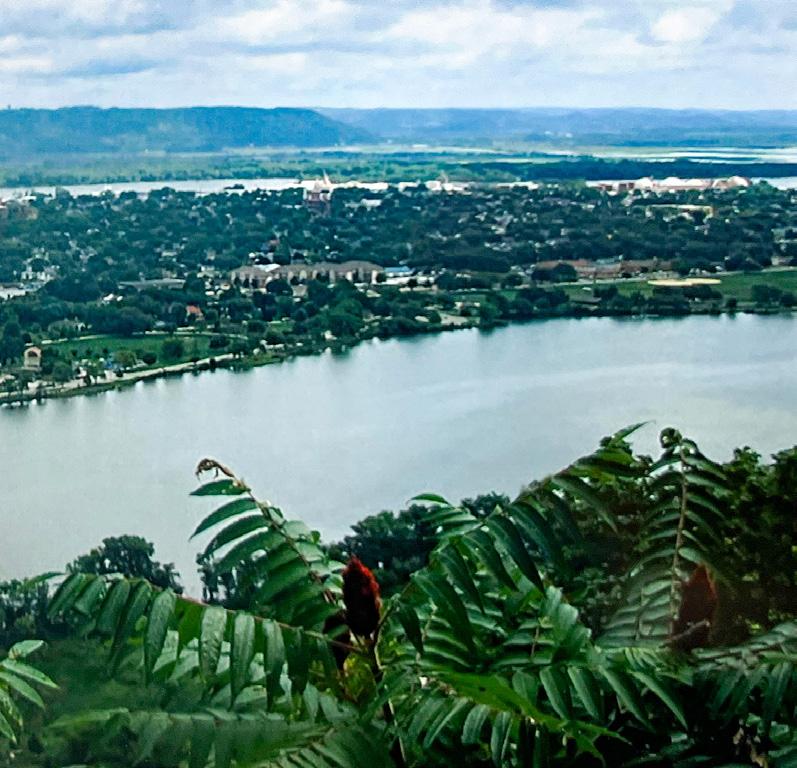
ST. CLOUD PRIDE WEEK
SEPT. 15 - 22
PRIDE BURLESQUE DINNER AT ARROY
SEPT. 18
YOUTH PRIDE DANCE PARTY + DRAG SHOW
SEPT. 20
21+ DRAG SHOW AND AFTER PARTY
SEPT. 21
PRIDE IN THE PARK + PUPPY PARADE
SEPT. 22





My journey on Viking River Cruises’ “Portugal’s River of Gold” showcased the beauty of the Douro River Valley and the rich culture of Portugal and Spain. I traveled on the Viking Torgil, a ship designed for the Douro River. The Torgil accommodates 106 guests and 33 crew members. The ship features modern engineering, comfortable accommodations, and Scandinavian-style interiors. My 185 sq. ft. veranda suite offered sweeping river views.
The trip included a cultural enrichment program with guest speakers, regional menus by master chefs, and engaging entertainment. I attended classes on Portuguese language, wine, and how to make pastel de nata, the famous custard tarts.
This cruise was an immersive journey into the history, culture, and natural beauty of Portugal and Spain. Viking’s excursions revealed Lisbon’s maritime history, Coimbra’s medieval university, and the Douro Valley’s wine making traditions. Each day brought new discoveries, from Porto’s streets to Pinhão’s vineyards and Salamanca’s historic sites. The Douro River Valley offered stunning landscapes and centuries-old wine production. The Viking Torgil’s design allowed me to appreciate the river’s beauty up close, making it the ideal vessel for this journey.
My adventure began in Lisbon, a city known for its vibrant culture and historic charm. The bustling Alfama district, with its narrow streets and soulful Fado music, set the tone for my journey. The Belem district, famous for the Belem Tower and Jeronimos Monastery, offered a glimpse into Portugal’s rich history.
Day 2: Lisbon Monuments and Day Trips to Sintra and Cascais
I began my day in Lisbon with a panoramic drive, stopping at the Monument to the Discoveries, Belem Tower, and the Jeronimos Monastery, a UNESCO site. We then paused at Eduardo VII Park for photos and views over the Tagus River and St. George Castle. With some free time afterward, I took a day trip to Sintra and Cascais. Sintra, with its romantic palaces and lush gardens, felt like a fairy tale. The colorful Pena Palace, perched on a hill, offered panoramic views of the surrounding countryside. In Sintra, I had my first pastel de nata, a treat that originated in Lisbon. Created by monks to prevent food waste, pastéis de nata are made with egg yolk-based custard and are sold all over Portugal.
Cascais, a coastal town, was a perfect contrast with its beautiful beaches and relaxed atmosphere. I strolled along the marina, visited Boca do Inferno, and enjoyed a traditional Portuguese meal of grilled octopus with garlic, olive oil, and broccoli at a local restaurant.
3: Coimbra and Porto
On my way to Porto, I explored Coimbra, one of Portugal’s oldest cities and home to a medieval-era university. Coimbra holds a special place in Portuguese hearts, as it was the birthplace of six kings. I visited the Santa Claraa-Velha convent and ascended the hill to the university, where 700 years of learning are preserved. The library, with its 300,000 books, and the baroque organ in the chapel were highlights. After a lunch accompanied by fado music, I continued my drive to Porto.
In Régua, overlooking the Douro River, I explored the heart of Portugal’s wine-making region. At Casa do Douro, I admired beautiful stained glass windows and learned about the region’s rich port wine history. The surrounding Serra do Marão mountains provided a stunning backdrop.
Later in Pinhão, the epicenter of port wine production, I visited several quintas, where I learned about the wine-making process and sampled local wines amidst serene vineyards. A visit to the Mateus Palace, famous for its baroque architecture and wine labels, was another highlight. The grand stairway and formal gardens were impressive. The day ended with a wine tasting at a local quinta, deepening my appreciation for port wine.
Barca d’Alva, the last Portuguese town on the Douro River, sits just a short distance from the Spanish border. The village is surrounded by cherry, almond, and olive groves, and its terraced vineyards offer stunning views. The simple cafés and scenic riverbanks add to its quiet charm.
I ventured into the breathtaking countryside to visit hilltop Castelo Rodrigo, a tiny medieval fortress town. This National Monument, recognized since 1922, is named for its castle. The town’s maze of cobblestone streets and 16thcentury houses, along with the distinct Portuguese Manueline-style windows, took me back in time. I explored Sinagoga Street, a poignant reminder of the Jewish community that once sought refuge here from the Spanish Inquisition, and visited the local church before returning to the ship.
Crossing into Spain, I explored Salamanca, a UNESCO World Heritage Site known for its beautifully preserved buildings. Founded by a Celtic tribe before the arrival of the Roman Empire, Salamanca is home to one of Europe’s oldest universities, established in 1134. The main square, often bustling with students, is often called the most beautiful in Spain. My tour included visits to the University of Salamanca, the House of Shells, and the New Cathedral.
In my free time, I fully embraced the local flavors of Spain. I indulged in traditional tapas, savoring the variety of small, flavorful dishes. Churros dipped in rich chocolate provided the perfect afternoon treat. For lunch, I enjoyed a hearty plate of paella, accompanied by a refreshing glass of sangria. Exploring the city through its food and drink added a delicious layer to my experience in Salamanca.
Pinhão, nestled among the terraced hillsides of the Douro River Valley, offers a quiet atmosphere despite its significance in the port wine industry. The village’s scenic river promenade made for a perfect leisurely stroll.
Our first stop was Favaios, known for traditional bread-making. I visited one of the last bakeries in the Douro Valley still using wood and old grapevines to heat the oven. Tasting the freshly baked bread was a highlight, and the local museum of wine and bread offered insight into the region’s deeprooted traditions.
We then continued to Sandeman’s winery, a renowned name in port wine. The journey along winding roads provided stunning views of the Douro Valley. The winery tour was fascinating, offering a behind-the-scenes look at the winemaking process, with breathtaking vistas that made the visit truly memorable.
In Lamego, I visited the Sanctuary of Our Lady of Remedies, an 18th-century baroque chapel perched on a hilltop. The chapel is a popular pilgrimage site, and traditionally, devout pilgrims have crawled up the 686 steps on their knees as an act of penance. This ritual is similar to what pilgrims do at Fátima, where they crawl from the Basilica of the Most Holy Trinity to the Chapel of Apparitions on their knees, circling the chapel while praying the rosary.
Inspired by this tradition—and perhaps feeling the need to balance out the effects of two desserts and several glasses of wine each day at the vineyards— I decided it was time to pay my own penance. Instead of crawling, I took on the challenge of the entire staircase, climbing up and down three times for a total of 2,000 steps. The views from the top were spectacular, making every step worth it. Afterward, I explored Lamego’s Gothic cathedral and browsed the local shops for handcrafted products.
Porto is a city rich in history and culture, shaped by the Douro River and the port wine trade. The city’s prosperity was tied to the barcos rabelos, the single-masted boats that once transported wine from the Douro Valley to Porto. Though no longer in use, these boats still grace the river’s edge, adding to Porto’s charm.
Building more financial confidence through every conversation.
Your unique vision for the future requires a more personalized approach to financial advice. From growing your family to planning for retirement, I can help you navigate your financial journey. Ready to work toward your financial goals? Let’s plan for them together.

Amie Burnett, JD, CFP® Financial Advisor
952.921.3371 7101 York Ave S, Ste 330, Edina, MN 55435 marie.a.burnett@ampf.com ameripriseadvisors.com/marie.a.burnett Ameriprise Financial cannot guarantee future financial results. Certified Financial Planner Board of Standards Inc. owns the certification marks CFP ®, CERTIFIED FINANCIAL PLANNER™ and CFP (with plaque design) in the U.S. Securities offered by Ameriprise Financial Services, LLC. Member FINRA and SIPC. © 2024 Ameriprise Financial, Inc. All rights reserved.

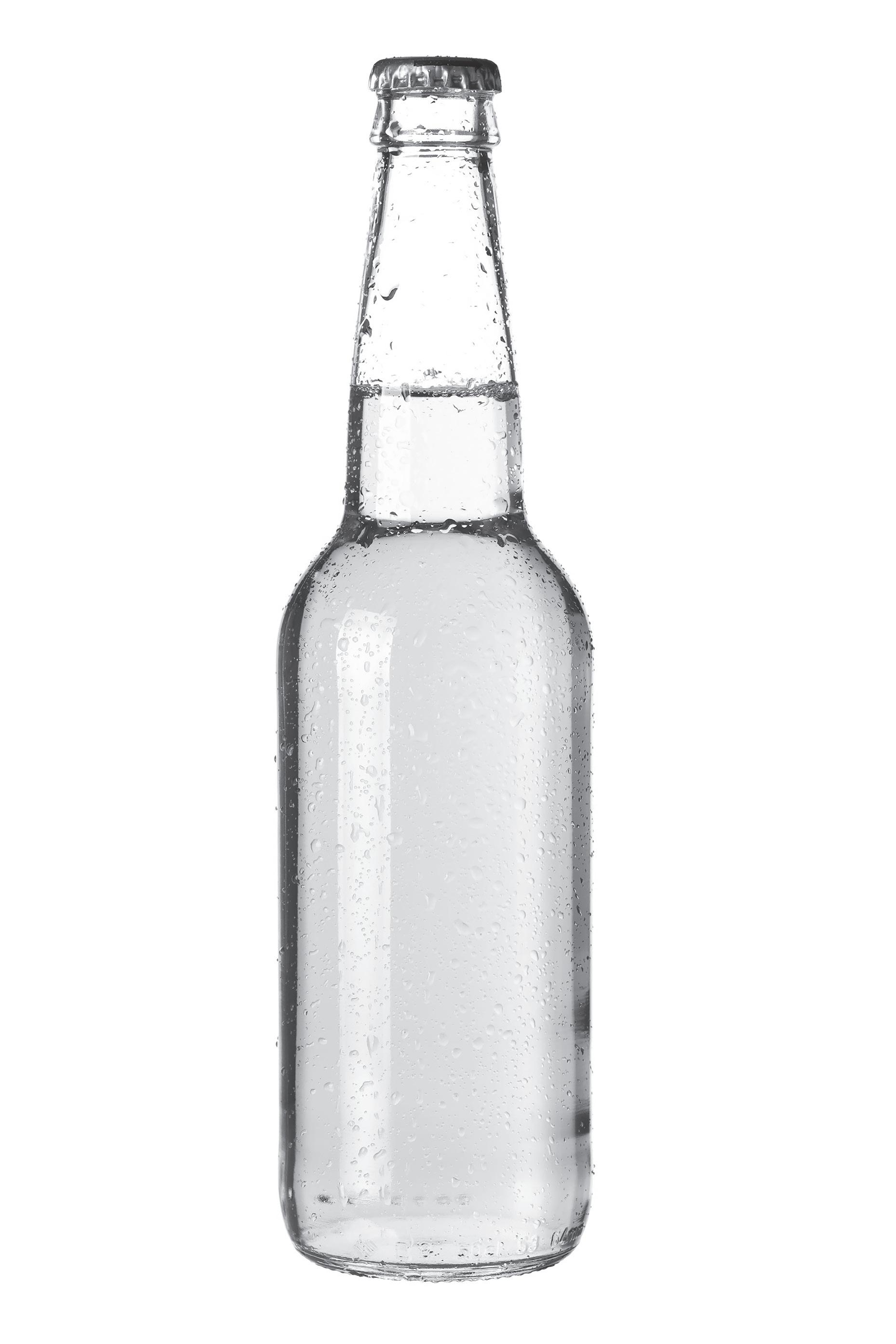


I spent the day exploring Porto on foot, starting with a walk across the iconic Luís I Bridge, a double-decked metal arch spanning the Douro River. I then visited Porto Cathedral, a 12th-century Romanesque landmark with stunning historic stonework and a serene interior.
Afterward, I made a brief stop at São Bento train station, known for its blue and white tile panels depicting scenes from Portugal’s history. The station was less impressive than anticipated, but still a notable part of the city’s architectural heritage. I then wandered down Rua das Flores, Porto’s most famous street, enjoying some free time to explore. The day ended with a leisurely stroll along Ribeira’s riverfront, soaking in the views of the Douro River and Porto’s unique character.

Personal Touch: An Expat’s Journey Julie Hosch, from St. Paul, describes entering the “third phase” of her life when she decided to leave behind a 26-year career. After a transformative cruise on the Danube, she realized she didn’t want to return to her job. “One Friday night, with a glass of wine in hand, I made up my mind. By Monday, I parked in the short-term visitor spot, walked into HR, handed in my badge, and quit. The relief was
International Living magazine, Julie was drawn to the idea of retiring in Portugal. Although she had never been there, the European lifestyle appealed to her. She joined a Facebook group for Americans in Portugal and began the complex process of moving
Adjusting to life in Lisbon wasn’t easy. “The city’s reserved atmosphere was a stark contrast to the Minnesota friendliness I was used to. I spent sleepless nights questioning my decision.” But over time, Julie settled into her new life, moving from the busy city center to the quieter area of Belém. “Daily walks by the river, past the Belem Tower and Jeronimos Monastery, became a cherished routine.” Making friends took effort, but through local meetups, Julie built a community of both locals and expats. Despite the challenges, including the language barrier, “I now feel at home.” Over a year later, Julie reflects on her journey with pride, “embracing the freedom and beauty of my new life in Portugal.”




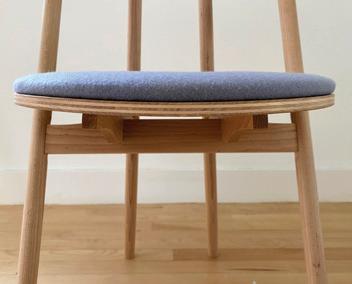




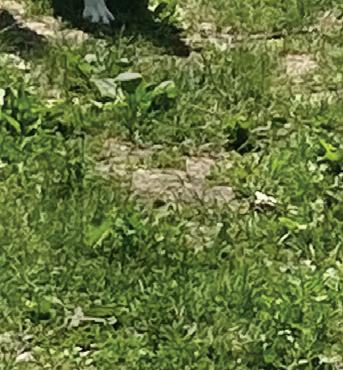






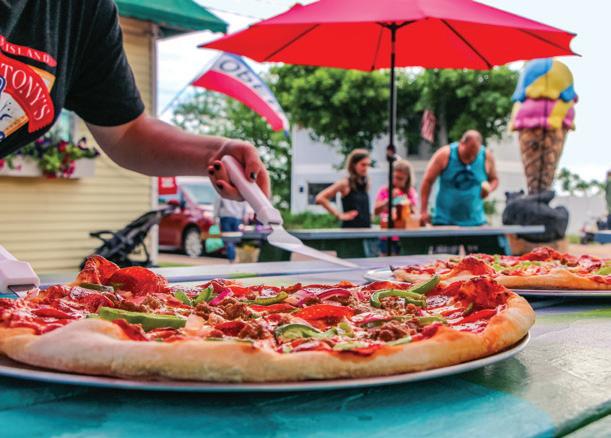





There’s nothing quite like escaping into nature, especially as the last little bit of summer turns, like the leaves, into a crisp and cozy fall. There’s something about the beautiful trees, full of their oranges and reds and browns, and the air, with a little chilly breeze, and the way the sun sets earlier and earlier that just makes being outside at the beginning of fall feel magical.
There’s no better way to enjoy this nostalgic time of year than by waking up in a gorgeous cabin just outside of the city. That’s where Getaway comes in to make your fall even dreamier.
Getaway is the perfect way to enjoy nature and disconnect from the stressful hustle and bustle of the city. Getaway creator and CEO Jon Staff started Getaway because he knew early on that people need nature to live happy, fulfilled lives.
“Science has shown that there is a measurable effect to what they call … the soft fascination of nature, [which is] the proven effect of watching leaves rustle or campfire flames flicker,” Staff says. “They relax us … it’s different than watching paint dry.”
From his early life, growing up in the picturesque wilderness of Minnesota, Staff knew that this connection to nature was crucial. After an unfortunate fire burned down his family’s bar, Staff says that his parents had to make the difficult financial decision to abandon either a cabin in the woods that they’d just begun building or their house. For many reasons, including, importantly, that the cabin was closer to his mom’s new job, Staff’s whole family picked up and moved into the small cabin in the woods.
“That’s where I grew up, in this house that was meant to be a cabin. Nine hundred square feet, on a lake, on the Mississippi River,” Staff says. “My childhood was wandering through the woods, and sitting around the campfire. And exploring the little beaches … it was idyllic.”
Outside of the science of it all, Staff says “As soon as you’re in [nature], you know it’s good.”
This childhood among the trees, lake and wilderness is part of what inspired Staff to create Get-
away. Staff says he began the company as a way of “bridging the urban-rural cultural divide, the idea that you’re either a city person and that’s all you are or you’re a country person and that’s all you are.”
This idea that you have to choose one is diametrically opposed to Staff himself.
“Starting Getaway was twin things that people too often think are opposed. One is, I moved to the city, and I loved the city. Now I live in Brooklyn and I love restaurants and bars and museums and art and music and people and energy that you find in the city,” Staff explains. “But I also had this amazing childhood in Minnesota in nature, in the woods, disconnected, out on the water … and I love those things. I wanted people to have both sides of that coin.”
It isn’t about leaving the city behind or leaving nature behind. Starting Getaway was the perfect way to bring these two different worlds together in a lovely harmony.
Staff laughs, saying “My joke is: I never went to summer camp and I think my career is just me desperately trying to make up for the fact that my parents didn’t send me to summer camp.”
He continues. Of course, he didn’t go to summer camp, living out there in the woods with the lake and the campfire and the trees.
“Life,” he says, “was sort of a summer camp.”
Staff also recognized that spending time in nature, especially for those living in the city, was probably even more difficult for people who hadn’t grown up in such idyllic natural surroundings.
“I felt the struggle of ‘I can’t easily get to nature,’ and I spent way too much time being connected,” Staff says of a job he had when he was younger that required him to always be available.
Knowing that so many others felt this way too, Getaway was a perfect solution. Accessibility to nature should be something everyone can enjoy, after all.


“We believe deeply [at Getaway] that free time is not just what you get if you’re rich enough or you check everything else off your list, or something you get once a year, but something we can all weave into our lives … what we’re providing there [with Getaway] is free time,” Staff says. “Getaway was a way for me, and eventually others, to hopefully have great fulfilling, energetic lives in the city, but also have a way to easily escape the city and be immersed in nature and have a counterbalance from hustle and bustle … and stress.”
That’s exactly what Staff and the Getaway team have created through their glamping properties, each located just outside of major cities. Of locations all over the U.S., the one just an hour and a half from Minneapolis holds a very special place in Staff’s heart. It’s the property beside the cabin where he spent time as a child. Staff says the location outside of Minneapolis is a beautiful property with 49 tiny, private, isolated cabins on it.
“It’s not just a cabin in the woods, it’s a special time and place to either create or build on your ritual of having free time,” Staff elaborates. “What is more core to humanity than having time where you make choices about how to spend it and have the ability to spend it with the people you love most?”
And the best part of all: Getaway is “everything you need and nothing you don’t … There’s a comfortable queen bed, there’s a kitchenette, with a two-burner stove and a mini-fridge and a sink, there’s a bathroom with a toilet and a shower, and it’s on-grid, so you don’t have to worry about running out of water.”





Basically, Getaway is truly a breath of fresh air. You can learn more about Getaway (and book your stay!) on their website www. getaway.house! art market - sunday, Sept 29 12-5pm @


Everyone knows Iowa as the Hawkeye State … but precisely why everyone knows Iowa as the Hawkeye State is the topic of some debate. The nickname might have been inspired by a popular 19th-century novel or a real-life Mohican chief.
Another possible origin story supposes the nickname was a preemptive strike of sorts: frontier lawyer David Rorer fretted that his fellow new state citizens might, without corresponding interference, be bequeathed an insulting nickname similar to those thrust upon their neighbors: residents of Illinois were then known as “suckers,” and residents of Missouri were then known as “pukers” … and since the mostly-theoretical Nebraska had already put dibs on “cornhuskers,” “hawkeyes” seemed like a better appellation on which to settle.
The eyes of a hawk aren’t necessary to take in an autumn getaway spent in Des Moines, the state’s capitol, but they might help. One optical option manifests before one even arrives in “the Hartford of the West”: the fertile soil not occupied by ripe crops is occupied by sleepy trees, lots and lots of ‘em, and the aesthetically pleasing death of chlorophyll within their foiled foliage will bedazzle the traveler’s eye whether said traveler is seeking such bedazzlement or not. For the seekers thereof, the best time to take in such leafy rainbows is mid-September and mid-October—apparently, Iowa autumn is a Libra.
Perhaps the most balanced and multi-faceted of multiple leaf-peeping options can be found at Jester Park. It takes its fall foliage viewing seriously, offering options that vary from watching elk and bison from observation decks to guided horseback rides to indulging in the Nature Center’s 18-hole golf course. Alternately, aspiring poets wishing to become inspired poets are free to explore alone the eight miles of hiking trails carved into Jester Park’s transformative 1,600 acres. Obviously, numerous other options can be found online.
Away-getters who eschew natural beauty in favor of artificial beauty will find plenty to celebrate when entering downtown Des Moines. Its most unique feature is its collection of dozens of building-sized murals, gracing the exterior walls of the region’s most fortunate structures. Internet resources can turn consecutive viewing of the city’s murals into an excursion of its own.
Years ago, Des Moines citizens John Poppajohn and Mary Louise Poppajohn donated two dozen bits o’ statuary to the city. It placed said artwork onto 4.4 acres of citified public space, transforming it into the aptly-named Pappajohn Sculpture Park. Today the Park boasts over thirty such exhibits, varying in
form from the figurative to the abstract, from the minimalist to the fabulous.
Also, downtown, the Des Moines Art Center offers a wider range of art, along with the added benefit of a roof — three roofs, in fact, as the center is composed of three attention-grabbing buildings whose design might qualify them as artworks in their own right.
Of course, visitors to Des Moines can find plenty that’s, uh, “Lavender”-friendly to look at, as well.
Capital City Pride identifies itself as an organization that, according to its website, “produces authentic events and activities throughout the year for people to feel safe and welcome under the four pillars of Pride: Community, Education, Family, and Health. By providing access and visibility, they educate.”
Such activities might well fall into a fall getaway. Des Moines visitors might sit in on a meeting of Des Moines’ Pride Book Club, take in some queer cinema via the Varsity Pride program, attend an Intergenerational Panel Discussion, be swept away by a Storytellers’ event, or play a game of Family Feud. Speaking of families, visitors with kids might indulge in a rainbow scavenger hunt or take part in a Rainbow Safari at Blank Park Zoo (where Des Moines keeps its exotic animals, not its refraction-wrought optical phenomena).
Speaking of exotic animals, it’s worth remembering that the eyes of a hawk can see best after sunset.
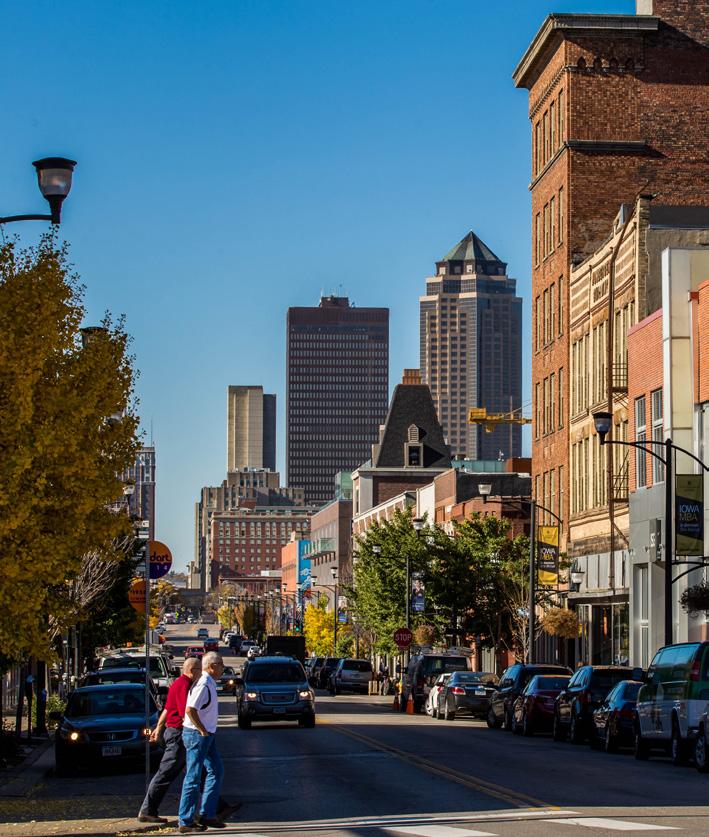
A tent pole of Des Moines’s queer community is its East Village, and a tent pole of its East Village is Iowa’s oldest gay bar, The Blazing Saddle (“where it’s always a double and never a cover”). Recently the subject of a documentary, “The Last American Gay Bar,” The Blazing Saddle first giddied up in 1983.

That means The Blazing Saddle has served multiple cultural purposes during its four-decade existence: a haven during the AIDS crisis, a grumble ground during Don’t Ask, Don’t Tell, or a springboard to honeymoons for precocious same-gender marriages. Naturally, that history doesn’t preclude what’s expected from a modern gay bar: drag shows, happy hours, trivia nights, and even charity events.
The LGBTQ+-owned Buddy’s Corral is right next door to the also LGBTQ+-owned Blazing Saddle. A cash-only bar, it’s often described as more relaxed than its next-door neighbor, featuring a jukebox


and karaoke. Similarly, the Garden Restaurant & Show Lounge is a queer-owned and -operated business that is home to a host of amazing talent with an outstanding legacy. The Garden offers a wide variety of entertainment and a full kitchen menu (hence “Restaurant”). The Locust Tap, also an LGBTQ+ business, embraces the term “dive bar” like a dyke hugging her bike, specializing in affordable beer (hence “Tap”) and an easy-going, old-school feel. The Locust Tap’s walls are unselfconsciously covered in graffiti, and its floor is unselfconsciously covered with cracked tile.
Like the origins of Iowa’s accipitrine nickname, the options for visiting its capital are manifold. Beauty can be found outside Des Moines or inside it, and, like all the best beauty, it’s in the eye of the beholder. Catch Des Moines, the capital city’s tourism and travel industry marketing organization, puts it this way: “Our community continues to welcome all groups and all visitors. We invite you to come and experience Greater Des Moines as you are.”
Des Moines, Iowa www.catchdemoines.com capitalcitypride.org



St. Cloud is a location that exceeds all expectations. The unique city finds itself ricocheting between urban and rural. It is big enough for someone to find something new to do or explore regularly, but still small enough for someone to really get to know the community. St. Cloud’s community is something you cannot experience anywhere else.
St. Cloud is a city that prioritizes inclusivity. Intelligent and passionate business owners not only demonstrate this but also work to build safe and interesting spaces for everyone.
Kayla Adams and Laura Wolfram, partners and co-owners of Korppi Coffee + Bakeshop, mixed their love for coffee, the environment, and making people comfortable when building their business. Every aspect of the business has been carefully thought out, including the name, which is the Finnish word for raven: an homage to the unique bird and Adams’ family history.
Both they and their hardworking team continuously make strides to support the local economy, encourage environmental sustainability, and cultivate a space where everyone feels welcomed.
The business snuck up on them after they both thought about what kind of changes they wanted to make to their community and the world. After careful deliberation, they discovered that owning a sustainable and conscientious coffee shop fit their desired role.
“Our core values are kindness, integrity, and intentionality. We want people to feel like they can be welcome here and be treated like human beings no matter who they are, whether they’re queer or not. I think having that space, especially during the day, where people can go and know that they can be themselves was a big motivator,” Wolfram said.
They curate this welcoming environment by co-hosting events such as a quarterly “Queer Connect” with St. Cloud Pride, where people can come and be themselves while also meeting new, friendly faces.
Adams and Wolfram are not the only business owners set on making St. Cloud feel like home for everyone. Brandon Johnson and his partner Josh Hoffman operate Copper Pony, a gift shop that goes the extra mile.
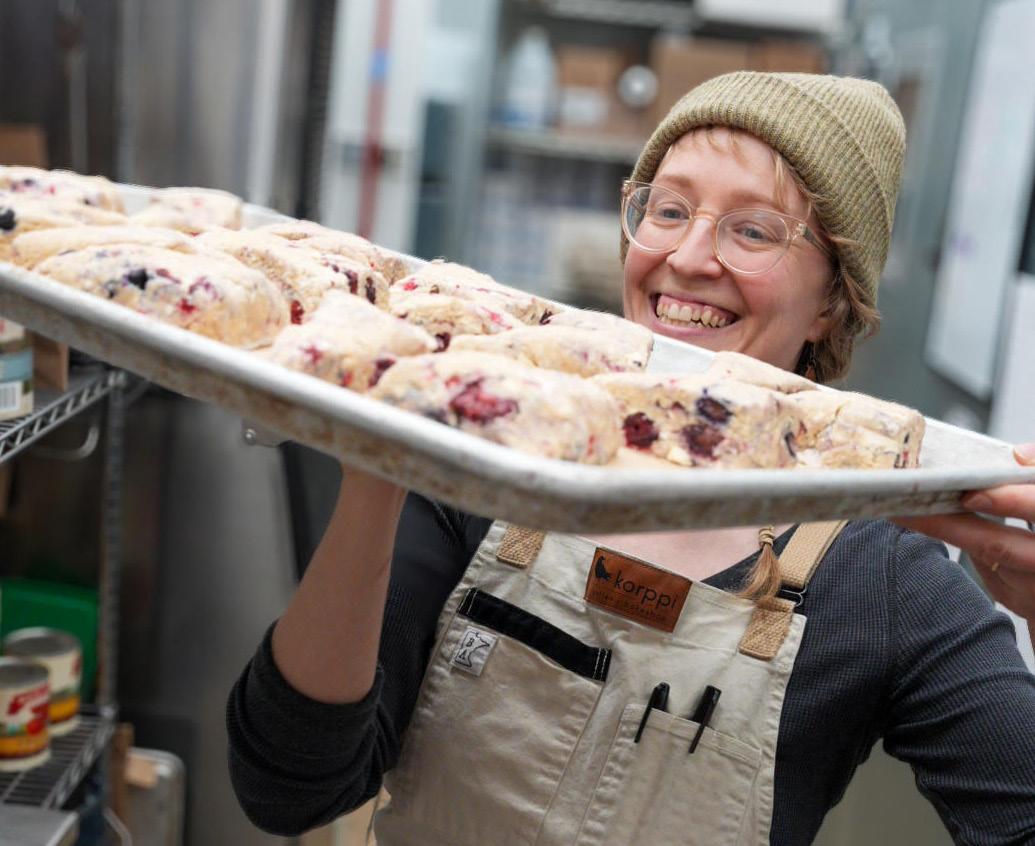
The two have spent each of their ten years in business dedicated to honing in on their ideals: great gifts and food, great environment, and great people. They found their niche while sharing their passion for interesting home decor by selling it out of their garage, before eventually establishing a storefront. At Copper Pony, they drive home “food, mood, and service,” according to Johnson.
They want each guest to feel welcome and excited to build their home into a space that brings them joy. They encourage this through their interior design, quality food, and their attention to the needs of the consumer. Even more, Copper Pony is set on embracing the diversity within St. Cloud.
“Our community is everything. Without our community, we have no business,” Johnson said. “I’m speaking now generally, like, broadly about the community. Obviously, the LGBT community is a part of that, but the central Minnesota community and beyond has been really incredible supporters of what we’re creating.”

Not only do their staff and merchandise bring this to life, but they also host events once a month where they spotlight different businesses and artists that ring true to their morals. Johnson, Hoffman, and the team at Copper Pony want everyone to feel at home.
In addition to Korppi Coffee + Bakeshop and Copper Pony, Modern Barnyard, with its eclectic mix of contemporary and vintage home decor, is a business built on passion.
James Beck and his partner John Malikowski began Modern Barnyard just over seven years ago and, along the way, have shaped it into a business that supplies more than just home goods. The merchandise is unique in that it serves to evoke memory and inspire creativity.

Not only does Modern Barnyard help its community and surrounding areas by creating the perfect home environment, but it also likes to support its community in other ways. They’ve hosted fundraisers for Anna Marie’s Alliance, a local women’s domestic violence shelter, and worked with the American Cancer Society, the Indy Foundation and the Tri-County Humane Society.
“We like to do a lot of things to give back to the community,” Beck said.
Alongside its numerous LGBTQ+-owned and -operated businesses, St. Cloud hosts events that amplify diversity in its community.
St. Cloud Pride begins on September 15th and runs until the 28th, and has a surplus of activities and events for people of all ages to enjoy.
Meredith Rosenbaum, vice chair of St. Cloud Pride, shared her excitement about this year’s events. While many previous favorites will be making a return, including the drag show, youth dance party, and burlesque dinner, there will be new activities, too: a block party, family-friendly games, and a kickball tournament.
“What I enjoyed is seeing, throughout the years, the people that I know are allies, but also people in the community that I see around because St. Cloud really does feel like a small town. You see a lot of the same people over and over, and it is so encouraging to see those neighbors and friends walk by at a pride event and know that they are welcoming,” Rosenbaum said.
The events are for everyone from any background to enjoy and are centered on the joy that can be found in embracing the differences that make a community so special.
In addition to its annual Pride event, St. Cloud Pride hosts numerous events throughout the year to help the LGBTQ+ community stay connected. Rosenbaum encourages people to visit their website at www.stcpride.org for more details.







In Minnesota, we always believe that we’re a great destination for visitors the world over to enjoy. Also, we Minnesotans love to travel everywhere we want to be. This is why we get excited when new travel options become available to us.
At Minneapolis-Saint Paul International Airport, we are finally getting a major airline that will connect us with Europe and the rest of the world. An airline known for excellent service and a vast network from their Frankfurt base.
On June 4, the Metropolitan Airports Commission and MSP welcomed Lufthansa – the flag carrier of Germany.
This award-winning airline became the 19th airline to service MSP. It does so by adding another direct service option to a major hub in Europe.
Dirk Janzen, the Lufthansa Group’s Vice President of Sales for The Americas, points out that the airline has a “vast network that goes way beyond Europe. We have over 200 destinations worldwide, obviously in Africa, but also India. It’s a perfect connection actually [to the] Middle East. That’s what we bring to the table. Frankfurt is a very strong, unique hub and then connecting to literally everywhere in the world.”
Lufthansa is committed to serving MSP year-round with their Boeing 787-9 Dreamliner with passengers choosing between Business, Premium Economy, and Economy classes. The non-stop flight will operate five times weekly on Mondays, Tuesday, Thursdays, Saturday, and Sundays.
Janzen mentioned that Lufthansa waited a long time to serve MSP. “If you look at the sheer size of the market, the two cities, the whole region, it was really a blank spot on the map that we didn’t serve yet,” said Janzen. He cited that choosing MSP was because of our corporate environment – namely the North American headquarters of Allianz in Golden Valley and German logistics technology manufacturer SICK, located in Bloomington. Janzen also mentioned that passengers from Europe could also connect with the research community at the University of Minnesota. These opportunities will draw business travelers to our region, according to Janzen.
Add to that the fact that MSP is one of the best airports in the U.S., with a number of awards and top rankings by practically everyone in the travel business.
Although international low-cost carrier Condor flies to and from Frankfurt from MSP out of Terminal 2, Lufthansa brings more opportunity for frequent fliers through its partnership in the Star Alliance. For travelers heading to Germany, as well as across Europe and the world, you can do this directly from MSP instead of changing planes at Chicago’s O’Hare Airport or other United Airlines or Air Canada hubs—both airlines are also Star Alliance partners.
As mentioned before, Lufthansa’s Frankfurt hub offers a vast array of connections for leisure trav-
elers looking to visit new places or to see family. Janzen mentioned Africa and India as two places where Lufthansa can connect you to. With communities in our region having families in those two locations, the airline serves multiple airports that can get them there.
Lufthansa also serves popular destinations within Europe through Frankfurt. Whether it is a fall stroll through Prague or a coastal getaway in Croatia next summer, the direct flight from MSP eliminates multiple hops across North America and Europe on different airlines to get to these destinations.
Another reason to consider Lufthansa for your next trip across the Atlantic Ocean is its reputation of being pet-friendly. The airline has been noted as one that can fly your pet safely and ensure its health during your journey. The airline has also been used to carry rescue pets with excellent results.
There is one more incentive to consider flying Lufthansa across the Atlantic: “Lovehansa.” Last June, the airline unveiled a special plane with an LGBTQ+ Pride theme. It also shows the commitment by the airline and the larger group in serving us, as well as supporting their LGBTQ+ employees across their network.
The next time you consider a trip to Europe, Africa, or anywhere on the other side of the Atlantic Ocean, you now have a new choice—an airline with a reputation for premium service and outstanding connections to the entire world.
Welcome to MSP, Lufthansa. And, welcome aboard!
Lufthansa
www.lufthansa.com/us/en/homepage
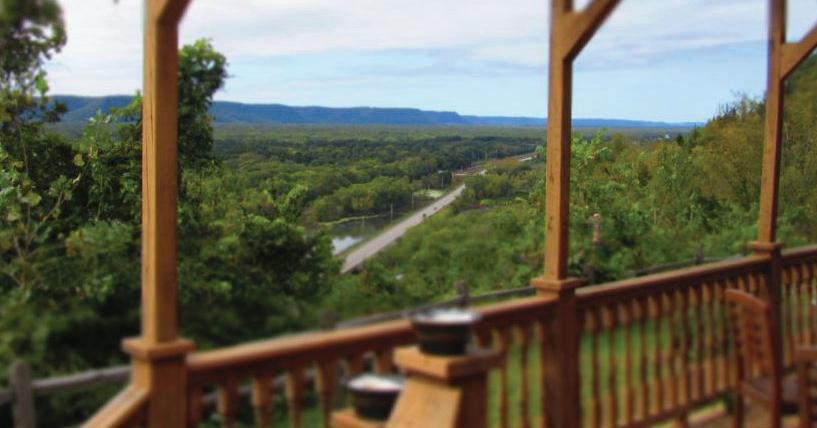




651-293-0803
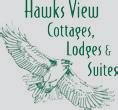




BY NOAH MITCHELL

There are few feasts for the eyes like fully colored fall foliage in northern Minnesota. Nestled among the trees, about halfway up the North Shore, is a lovely place to make your home base for an autumnal adventure: the city of Silver Bay.
Home to Tettegouche State Park and part of the Superior Hiking Trail and just a 15-minute drive from Split Rock Lighthouse, Silver Bay is a hub for all things North Shore.
“[Silver Bay] is kind of the center of all these things,” says Alice Tibbetts, president of Silver Bay’s North Shore Adventure Park.
However, there’s much more to Silver Bay than its proximity to what you already know — it has its own identity and attractions just waiting to be enjoyed.
One such landmark is the Black Beach, which is, believe it or not, exactly what it sounds like. Its unique black sand is less than a mile from town, and
even when the summer heat has gone, you can stick your toes in it and enjoy the sights and sounds of Lake Superior.
The beach is just the beginning of what Silver Bay has to offer.
“There’s a whole world of things up the hill,” says Melissa Dressely, principal of Do North Marketing.
Amenities in Silver Bay include next-door neighbors Timber Coffee Company and Zoe’s Pizza Kitchen as well as Black Beach Mini Golf.
Between those two ends of town, just off Highway 61, is the North Shore Adventure Park. The park features ropes courses, ziplines, and axe and knife throwing. The ropes course has five different levels of difficulty: yellow, green, blue, black and double black.
“No matter your confidence or skill level, there’s something for you,” Tibbetts says.
At the end of each course is a zipline, one of which is the Dual Racing Zipline. Its twin 400-foot cables form a race track unlike any you’ve experienced before (unless you’re a veteran zipline racer, which I suspect you are not).


Lavender Media is seeking to add a Twin Citiesbased full time Account Executive to our sales team. We are looking for an outgoing, organized, self-driven & motivated professional with excellent phone, writing and presentation skills. Candidates should enjoy working directly with clients who are interested in growing their business through Lavender advertising and event sponsorships. Candidates must be local.
Compensation: $1,500 base + commission every issue (two weeks) and an employee benefits package that includes group health, dental, life insurance and LTD.
Applicants should have experience with Mac software environment, Excel, Word, social media platforms & database software such as Filemaker Pro. They should exhibit an elevated level of organization, attention to detail, the ability to work as part of a team, effective communication, self direction, enjoys working with new people and has a natural drive to grow.
Please send your cover letter and resume to Stephen Rocheford, President & CEO. stephen.rocheford@lavendermagazine.com







Community Connection brings visibility to local LGBTQ-friendly non-profit organizations. To reserve your listing in Community Connection, email advertising@lavendermagazine. com.
Second Chance Animal Rescue
Dedicated to rescuing, fostering, caring for, and adopting out dogs and cats into forever homes.
P.O. Box 10533 White Bear Lake, MN 55110 (651) 771-5662 www.secondchancerescue.org
Quorum
Minnesota's LGBTQ+ and Allied Chamber of Commerce working to build, connect, and strengthen for a diverse business community. 2446 University Ave. W., Ste 112 St. Paul, MN 55114 (612) 460-8153 www.twincitiesquorum.com
The Nature Conservancy
TNC is an environmental nonprofit working to create a world where people and nature thrive. 1101 W. River Pkwy., Ste. 200 Minneapolis, MN 55415-1291 (612) 331-0700 minnesota@tnc.org www.nature.org/minnesota
EVENT VENUES
Landmark Center
A classic venue, with a grand cortile and beautiful courtrooms, accommodates celebrations of all sizes. 75 W. 5th St. St. Paul, MN 55102 (651) 292-3228 www.landmarkcenter.org
GRANTMAKERS/FUNDERS
PFund Foundation
PFund is the LGBTQ+ community foundation that provides grants to students and grants to non-profits. PO Box 3640 Minneapolis, MN 55403 612-870-1806 www.pfundfoundation.org
HEALTH & WELLNESS
Aliveness Project
Community Center for individuals living with HIV/AIDS – on-site meals, food shelf, and supportive service. 3808 Nicollet Ave. S. Minneapolis, MN 55102 (612) 824-LIFE (5433) www.aliveness.org
Family Tree Clinic
We're a sliding fee sexual health clinic and education center, now in Minneapolis. 1919 Nicollet Ave. Minneapolis MN 55403 (612) 473-0800 www.familytreeclinic.org
Keane Sense of Rhythm
Celebrate your true self with Tap dance!
1st week free, Join us now!
2161 University Avenue W., Ste. 117 St. Paul, MN. 55114 (612) 251-4744 info@tapcompany.org www.tapcompany.org
NAMI Minnesota
(National Alliance on Mental Illness)
Providing free classes and peer support groups for people affected by mental illnesses.
1919 University Ave. W., Ste. 400 St. Paul, MN 55104 (651) 645-2948 www.namimn.org
Rainbow Health
Providing comprehensive health services for LGBTIA+ people, those living with HIV & folks from underserved communities facing healthcare barriers. 701 S. 4th Ave., #1500 Minneapolis, MN 55415 General: (612) 341-2060, MN AIDSLine: (612) 373-2437 info@rainbowhealth.org www.rainbowhealth.org
Red Door Clinic
HIV and STI screening, treatment, education, and referrals. Doxy PEP, nPEP, PrEP, and Reproductive Health. 525 Portland Ave., 4th Fl. Minneapolis, MN 55415 (612) 543-5555 reddoor@hennepin.us www.reddoorclinic.org
LIBRARIES
Quatrefoil Library
Your LGBTQ+ library and community center. Free membership, events, and e-books/audiobooks. Check us out!
1220 E. Lake St. Minneapolis, MN 55407 (612) 729-2543 www.qlibrary.org
MEDIA & COMMUNICATIONS
Radio K
Radio K is the award-winning studentrun radio station of the University of Minnesota.
330 21st. Ave. S. Minneapolis, MN 55455 (612) 625-3500 www.radiok.org
MUSEUM
Minnesota Historical Society
Create your own adventure at MNHS historic sites and museums around Minnesota. mnhs.org
Walker Art Center
Showcasing the fresh, innovative art of today and tomorrow through exhibitions, performances, and film screenings. 725 Vineland Pl. Minneapolis, MN 55403 (612) 375-7600 www.walkerart.org
Chanhassen Dinner Theatres
The nation's largest professional dinner theater and Minnesota's own entertainment destination. 501 W. 78th St. Chanhassen, MN 55317 (952) 934-1525
www.ChanhassenDT.com
Children’s Theatre Company
Children’s Theatre Company excites the imagination with world-class family-friendly theatre for kids, teens, and adults. 2400 3rd Ave. S. Minneapolis, MN 55404 (612) 874-0400
www.childrenstheatre.org
Guthrie Theatre
Open to the public year-round, the Guthrie produces classic and contemporary plays on three stages. 818 S. 2nd St. Minneapolis, MN 55415 (612) 377-2224 www.guthrietheater.org
Minnesota Opera
World-class opera draws you into a synthesis of beauty; breathtaking music, stunning costumes & extraordinary sets. Performances at the Ordway Music Theater - 345 Washington St. St. Paul, MN 55102 (612) 333-6669 www.mnopera.org
Minnesota Orchestra
Led by Music Director Designate Thomas Søndergård, the Minnesota Orchestra, one of America’s leading symphony orchestras. 1111 Nicollet Mall Minneapolis, MN 55403 (612) 371-5656, (800) 292-4141 www.minnesotaorchestra.org
Ordway Center for the Performing Arts
Leading performing arts center with two stages presenting Broadway musicals, concerts & educational programs that enrich diverse audiences. 345 Washington St. St. Paul, MN 55102 (651) 224-4222 info@ordway.org www.ordway.org
Twin Cities Gay Men’s Chorus
An award-winning chorus building community through music and offers entertainment worth coming out for! 1430 W. 28th St., Ste. B Minneapolis, MN 55408 (612) 339-SONG (7664) chorus@tcgmc.org www.tcgmc.org
All God’s Children Metropolitan Community Church
A welcoming, inclusive, safe place to explore and discover God’s love for ALL God’s children. 3100 Park Ave. Minneapolis, MN 55407 (612) 824-2673 www.agcmcc.org
Hennepin Avenue United Methodist Church
Everyone is welcome at Hennepin Church! Vibrant Worship. Authentic Community. Bold Outreach. 511 Groveland Ave. Minneapolis, MN 55403 (612) 871-5303 www.hennepinchurch.org
Plymouth Congregational Church
Many Hearts, One Song; Many Hands, One Church. Find us on Facebook and Twitter. 1900 Nicollet Ave. Minneapolis, MN 55403 (612) 871-7400 www.plymouth.org
St. Philip's Lutheran Church
We invite and welcome those of every spiritual background, ethnicity, gender orientation, or economic situation. 6180 Hwy 65 Fridley, MN 55432 (763) 571-1500 www.splcmn.org
University Baptist Church
Creating safe and inclusive spaces for 175 years, UBC stands proudly with our LGBTQ+ family.
1219 University Ave. SE Minneapolis, MN 55414 (612) 331-1768 www.ubcmn.org
Westminster Presbyterian Church
An open and affirming congregation, welcoming persons of all sexual orientations, gender expressions and identities. 1200 Marquette Ave. Minneapolis, MN 55403 (612) 332-3421 www.westminstermpls.org
SENIOR LIVING
Friends & Co
Fostering meaningful connections for older adults for 50+ years. Offering quick drop-in chat line, phone & visiting companionship services.
2550 University Ave. W., Ste. 260-S St. Paul, MN 55114 (612) 721-1400 www.friendsco.org
Senior Community Services
Providing non-medical services that meet the changing needs of older adults & support their caregivers. 10201 Wayzata Blvd., Ste. 335 Minnetonka, MN 55305 (952) 541-1019
www.seniorcommunity.org/lav
SOCIAL SERVICES
Lutheran Social Service of Minnesota
Serving all Minnesotans with personcentered services that promote full and abundant lives.
lssmn.org | (651) 642-5990 | (800) 582-5260
Employment Opportunities | lssmn.org/careers
PICS (Partners in Community Supports) | picsmn.org
Pooled Trust | (888) 806-6844
Supported Decision-Making | (888) 806-6844
Discover St. Louis Park
Minnesota’s Sweet Spot! Visit us for exceptional dining, attractions, shopping, hotels and event space.
1660 Hwy 100 S., Ste. 501 St. Louis Park, MN 55416 (952) 426-4047
www.DiscoverStLouisPark.com


















The park also has an area for children ages 3-6, the Lil’ Rascals Playground. Otherwise, if you’re uninterested in high-speed or high-altitude thrills and prefer the security and comfort of earth beneath your feet, Tibbetts says watching friends take on the course can be just as fun as doing it yourself.
North Shore Adventure Park is open from 10 a.m. to 3 p.m. on Saturdays from September 4 to October 13. Groups of 15 people or more can take on the course mid-week in the fall by making a reservation on the park’s website, www.northshoreadventurepark.com.
If you prefer your outdoor adventures to be more serene than rip-roaring, the nearby Baptism River within Tettegouche State Park is exactly what you’re looking for. It has natural beauty that is almost entirely undisturbed.
“I hike that all the time, I almost never see anybody,” Tibbetts says.
A couple of miles up Baptism River are the High Falls: the highest waterfall entirely inside Minnesota. While Grand Portage’s High Falls are a little higher, they stray into Ontario, so, like Justin Trudeau’s half-brother, they can be safely ignored.
Returning to town, rest assured that the North Shore is a welcoming place for people of all stripes, including LGBTQ+ people.
“Everyone is welcome here,” Dressely says. “We work hard at saying we’re a welcoming place.”
Silver Bay’s North Shore neighbors in Two Harbors just held the firstever Pride celebration in Lake County this July.
“Organizers say Two Harbor’s first ever Pride was fabulous and they’re looking forward to return[ing] next year,” reports FOX21 Duluth’s Drew Kerner.
Dressely has a number of tips for spending a day (or more) in Silver Bay. The first is to book your lodging as early as you can. Another is to make sure you check the hours of attractions if you’re visiting in the off-season outside of summer.

If lakeside lodgings are already full when you book, Tibbetts says to take a look at inland resorts. She says they’re often slept on, but offer a great combination of beautiful woodland views with peace and privacy while still being very close to the lake.
For more help planning your trip to Silver Bay, you can find an itinerary, as well as other resources, on Dressely’s website, North Shore Explorer MN (www.northshoreexplorermn.com).
“This, I believe, is absolutely the best of the North Shore,” Tibbetts says.


At the core of our care lies the profound understanding that you are on a journey to reach your full potential, to realize your goals and dreams, to reach your summit——no matter what that summit may be. It is this understanding that drives us to provide the highest standard of excellence through every injury or aching joint and muscle that may stand in your way.
IMMEDIATE CARE AT OUR ORTHOPEDIC URGENT CARE LOCATIONS THROUGHOUT THE METRO

